IN THIS ISSUE:
Sustainability + Social

Good: Education and Practice
Fashion Technology: Working Smarter, Not
Harder
Fashion Entrepreneurship: All Together Now





Sustainability + Social

Good: Education and Practice
Fashion Technology: Working Smarter, Not
Harder
Fashion Entrepreneurship: All Together Now





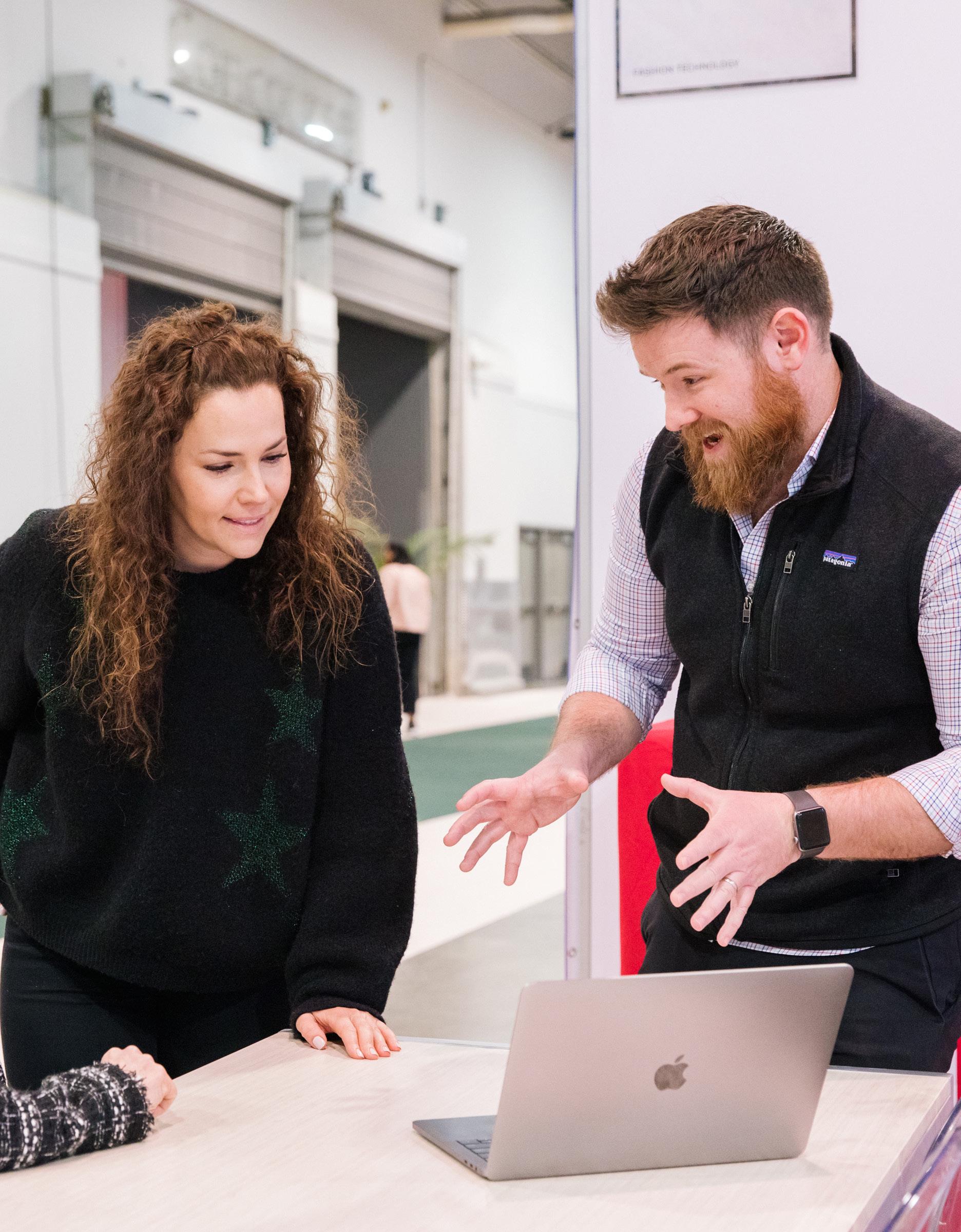
The February edition of SOURCING at MAGIC in Las Vegas brought all our partners together with a renewed community focus, going beyond just doing business to participating in something exciting, constructive, and hopeful. The event’s structure — built on Sustainability, Fashion Entrepreneurship, and Technology — provided an opportunity for all of us to learn, share, and explore new ways to connect. It’s become clear that meeting in person provides a richer, deeper experience that allows for serendipity and affinity.
“I had a client that was my major account in Canada, but the relationship had fallen apart. I was sitting at the show, and saw them walk by,” says Loren Galler of NingBo Evergreen Indus-

try Company, Limited. “The next thing I know, we’re sitting at the table talking again, and the door has reopened. That was, for me, a personal moment that gave me a lot of satisfaction. It wouldn’t have happened, honestly, if it wasn’t for SOURCING at MAGIC.”
Let us share just a bit of the excitement from the live event with you, here. We’re going to recap a few of the informative live sessions, take a walk down Social Good Row, dive deeper into innovation within fashion technology and sustainability, as well as share insights from industry experts. We also hope you’ll let us know that you think: After all, you’re part of the family, now. Welcome to the new SOURCING at MAGIC.
“When your booth is full of people it’s because you’re doing something great or something interesting that they are looking for,” says Marcela Salazar, Project Manager, Reprind S.A.C. Peru. “That’s my biggest moment.”
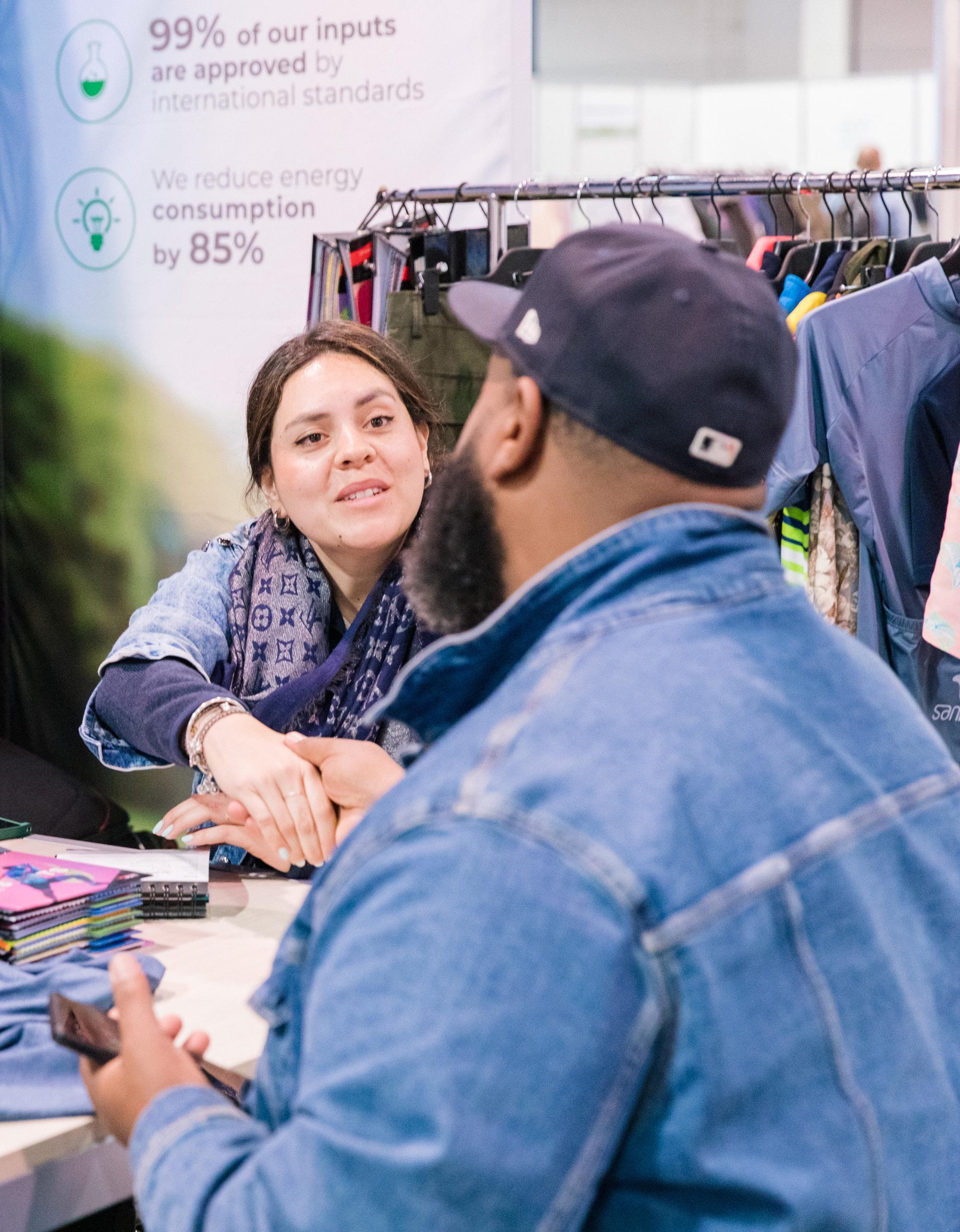
ability is all about education. How can we educate the consumer through the product and its packaging? I hope that buyers come here not only looking for the price but also looking for the message behind it.”
perfect solution for sustainability, but that we should all make better choices whenever we can.
The Sustainability and Social Good pillar of the SOURCING at MAGIC event came to life this season with engaging seminars, captivating displays, and one-onone connections, all fortified by our ongoing partnership with sustainability verification company, Hey Social Good.


As Devana Ng, Co-Founder of Invisible Company, says “Sustainability is a 360-degree commitment. Don’t look at price only. Sure, it’s important, but we need to focus on the end of life of the product. How do we educate the consumer? At the end of the day, sustain-
At an education session led by Dr. Cindy J. Lin of Hey Social Good and featuring Holli Gibson, of Direct to Source and Ng, the message was clear that there is no
Gibson shared her own personal experience of discovering that a manufacturer she had subcontracted with was not providing acceptable conditions for its workers, so her company’s solution was to build its own factories and hire its own labor force.
“When we built Direct to Source, we looked at everything. We looked at where we were going to get our fabrics, how much plastic we were going to use, what could we use that was recyclable and more sustainable, and what can we do with the scraps and leftover fabrics. We spent several years planning, always asking if those were the best choices we could make,” said Gibson.
Similarly, Ng recognized that recycling wasn’t being aggressively pursued in her native Hong Kong, so her solution was to find a water-soluble material that could be used to create transparent bags for garment packaging, thus decreasing litter and contributions to landfills. While all of us may not be able to go that far, making smarter, more informed smaller decisions can advance us all to a better situation for the planet. “I used to work in the cosmetics indus-
try and I saw how much we were consuming with the packaging, and that we didn’t have enough facilities to recycle all those containers. My husband and I were hiking and kept finding plastic trash on the trails. So we started doing some research and found a material that was water soluble. So we created a product called the Invisible Bag.”
Beyond inspiring, informative seminars, Social Good Row functioned as a matchmaker between brands and non-profit organizations to build collaborative relationships. FABSCRAP, The Climate Reality Project, and locals Friends of Red Rock and NPHY all sent representatives to talk with labels about how they might do well without much effort. Hey Social Good set up shop with Social Good Row, too, continuing its work to independently verify sustainability claims (with a framework of 17
goals, the United Nations 17 SDG’s is used as the benchmark) while offering advice to sustainably minded professionals all along the supply chain.
Finally, the Sustainability Gallery and the Positive and Responsible Impact with Sustainable Denim exhibit both showcased key sustainability initiatives while functioning as an easy,

welcoming introduction to the area. The Gallery showcased some of the capabilities of sustainably focused exhibitors. The Denim exhibit used video and actual garments to show how modern techniques — from using less or no water in the washing process to alternatives to potassium permanganate for finishing effects, to using lasers as a substitute for hand whiskering and sanding.

SOURCING at MAGIC has earned a reputation for being a veritable magnet for fashion brands to discover cutting-edge technology solutions that make production processes more efficient and profitable, while providing a legup on the competition. This season’s Fashion Technology exhibitors included companies such as Heartdub, Pivot88, Aims360, Style3D, and Prown.
“NFT technology can be used in real life use cases as we call it. I think — and it’s not only my opinion; analysts say the same — that within ten years everybody will be in the Metaverse. As a brand if you want to make sure that nobody copies or counterfeits your products there or in real life, you need to attach NFTs to everything.”
— Tomek Sienicki, Co-Founder and CEO, Prown
Ben Hanson, Editor-In-Chief of The Interline, a SOURCING at MAGIC partner, led an educational session titled “Intro to 3D Digital Product Creation (DPC).” As he put it, “This is probably the most important topic in fashion at the moment, and a long overdue transition for the industry. We all need to learn how to blend traditional skills like design and
marketing with hybrid digital skills. The fashion industry has been physical for centuries. Now it has the possibility to not just use digital tools to streamline the way that it makes goods, but also has the potential to sell digital fashion, digital assets, too.”

Hanson went on to explain how 3D DPC can help cut costs in creating samples by cutting down on creating physical samples, and allowing more nimble reaction time to changes, but also that it helps maintain design integrity throughout the supply chain: a digital model is not subject to interpretation. These 3D models allow for visualization and sets the foundation for approxi-
mating materials and fabric costs, as well. There’s also the potential for time and cost savings via virtual photography. 3D creation creates opportunities for the consumer to try on clothes virtually, and also opens up the possibility to work with applications which can allow augmented reality experiences with the simple addition of something like a Snapchat Lens.
“You’re not selling a product; you’re selling a message behind a product,” reminds Invisible Company Co-Founder Devana Ng

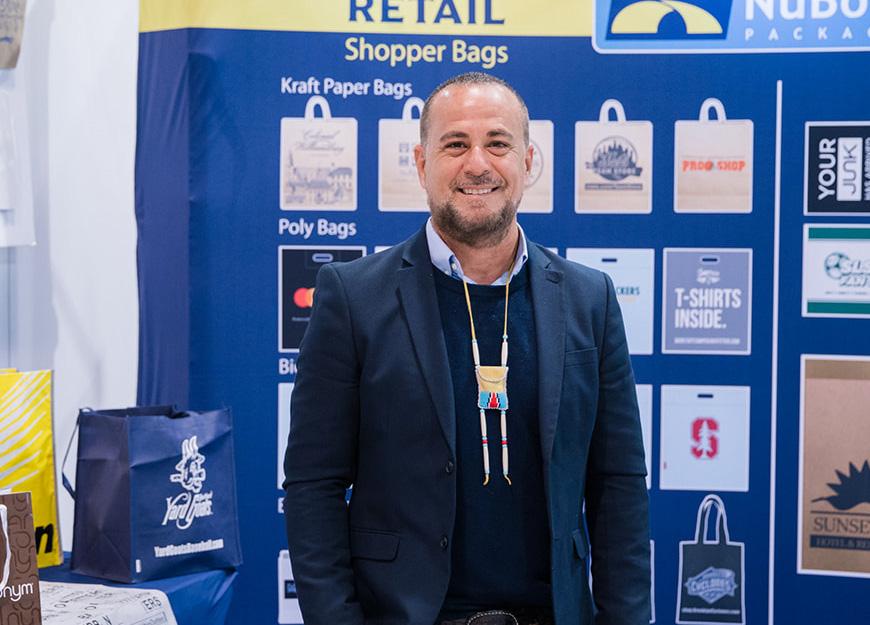
Entrepreneurship isn’t just for the designer ready to launch their own label or the new start-up on the block. Entrepreneurial thinking is key to keeping companies and brands of any size animated, growing, and relevant. How do some of our SOURCING at MAGIC community look at it?
“It doesn't matter what field you're in, whether it's apparel, beachwear, bags, or what, there's that entrepreneurial spirit that once you believe in your concept, just [work on your marketing] and branding and stay focused on what you're doing and use that branding as a platform to grow. But you must be consistent...with your branding and loyalty to your vision,” says Frank Allegro, co-founder of NuBoard Packaging.
 Frank Allegro, Co-Founder of NuBoard Packaging
Frank Allegro, Co-Founder of NuBoard Packaging


Of course, bringing a fashion vision to life is one of the main reasons entrepreneurs of all stripes come to SOURCING at MAGIC. A wide variety of trusted international manufacturers and suppliers come to help businesses of all sizes meet their potential, but in today’s fraught geopolitical environment, it’s nice to get a little guidance. One session at February’s event, “Discovery of Sourcing Countries: Diversify Your Sourcing Supply Chain,” featured the expertise of Dr. A Sakthivel, President, Federation of Indian Export Organizations, and Matthias Knappe of the Division of Enter-
prise Competitiveness and Institutions (DECI) representing Egypt and Jordan, and was moderated by SOURCING at MAGIC’s own Ashley McPherson, Buyers Relations Specialist. There are so many things that make these three nations wonderful places to manufacture, but to get specific, Sakthivel explained that the Indian Government is focused on expanding its textile sector, building on the nation’s existing completely vertical supply chain. Beyond sponsoring training at its network of National Institutes of Fashion Technology, the country has also set up a

“plug-and-play” system so that a manufacturer can set up a factory there in as little as 15 days. While Egypt is renowned for its extra-long staple cotton, until recently, the fiber was not processed there. Investment by the Egyptian government is changing that, to create a more vertical industry. Further financing is helping to modernize infrastructure for the textile industry and the whole country, allowing manufacturers to move goods faster. The private sector in Egypt is also investing in the apparel industry to be sure that the country can fulfill the rule of origin agreements
that other countries require. Jordan is a major trading partner for the U.S. Market, already importing about 1.9 million garments. As Knappe points out, the environment is so favorable that wholly foreign-owned Asian manufacturers are even bringing their own workforces to set up shop there. One particularly bright spot: The nation is recognized for its niche production of “modest wear/Islamic wear for women,” a growing market here in the United States.
The SOURCING at MAGIC team wants to make sure that our community is well-informed and up to date with everything that’s happening in our industry, from forward-thinking fashion trends to the latest in tech and the current business scene. As always, SOURCING at MAGIC’s mix of expert speakers and panelists shared valuable insights that can help us all be more successful.

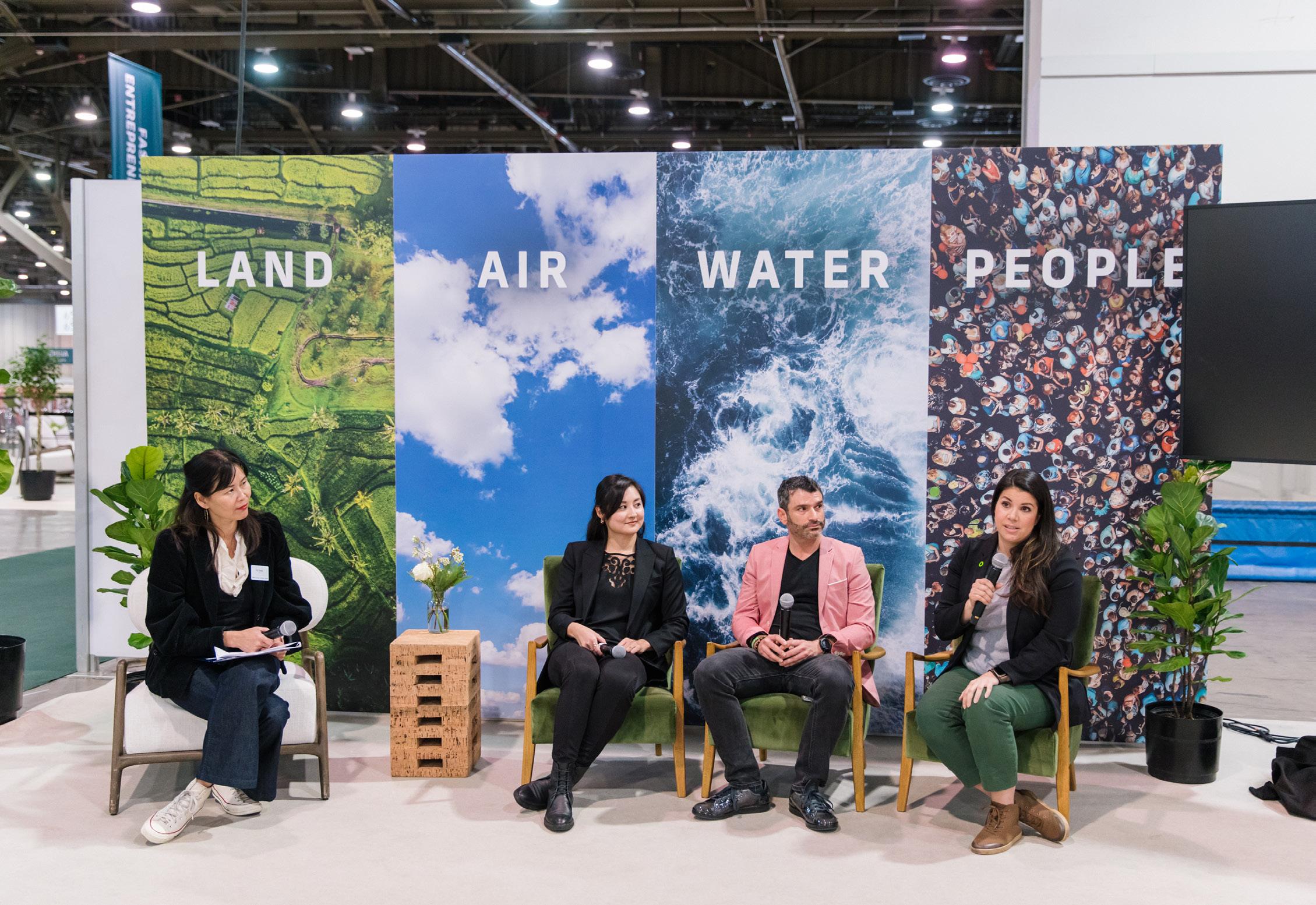
Nia Silva, Materials Director of Fashion Snoops, provided the respected forecasting company’s perspective on the big picture trends that will affect color and materials choices for next year. The company monitors cultural signals, consumer needs, and materials shifts to see what is influencing trends in fibers, constructions, finishes, detailing, and color direction. Silva summed those up into four major shifts for next year:

“Our first trend ‘Graceful Process,’ is about nostalgia-finding, or finding comfort in objects that feel familiar and worn down by time. The trend honors our origins, while connecting to our roots, with an emphasis on feminine craft and diasporic histories, focusing on authenticity,” Silva describes. “The trend is a continuation of the slow craft movement, and is inspired by origins, especially of organic, unprocessed materials.”
“‘Odd Grandeur’ reflects a wave of surreal design across industries. This trend goes above the burdens of reality, indulging small moments of fantasy, and a sense of humor in design. This trend incorporates fluid design and expression, including gender inclusive design strategies. Colors are influenced by baked goods, in hues that represent softness and simple pleasures.”
“We see a fresh and positive spin on sustainability in ‘Planet Positive’. Building on a deeper appreciation for nature, this trend is joyous and engaging, not lecturing. It highlights nature to restore a sense of wonder. Key colors incorporate dramatic vibrancy, juicy pinks, beet root, and a vacation aesthetic.
Silva finished Fashion Snoops four key trends with Elemental Comforts, “Based on the ongoing wellness movement this trend is about people of all ages wanting to tap into a more profound level of wellness, including soul-care. It translates into light and breezy fabrics and silhouettes, with a sustainability focus centered on less but better design, adding meaning and worth.”

1. Deceptive endorsements: “Paying an influencer must be clearly spelled out. People do it wrong all the time, and the penalties can be severe. The bigger the brand, the more particular the FTC will be with the deal, and there are even some cases involving class action suits.”
2. The right of publicity: “Everyone has the right to publicize their own name and likeness. If a company uses somebody’s image, from a celebrity to a customer, it must have a model release from the individual.” Metchek reminded everyone that an agreement with the photographer, who may own the photo, is also necessary.


Having a firm grasp on your company’s financial health — including the metrics that build value — and legal position is key to protecting and growing a brand in today’s complex marketplace. Ilse Metchek, President of the California Fashion Association led a discussion about financial and legal concerns in the modern market that featured the expertise of Gino Clark, Managing Director, White Oak Commercial Finance, and Morgan Pietz, Partner, Pietz & Shahriari LLP. Metchek pointed out that having a great idea isn’t always enough to get the financing that a fledgling company needs. Clark explained that the process involves evaluating companies and their ability to grow by leveraging all forms of assets. The three-legged stool he looks at for evaluation includes the ability to repay the money, the management team (experience), and collateral (especially Intellectual Property).
One chief takeaway from the session was for newly established companies to surround themselves with professionals that will complement their structure, creating a budget for a lawyer and an accountant from the very beginning. Pietz raised some legal issues that have become very important in the apparel industry recently, including:
3. The Metabirkin Metaverse: Pietz and Metchek used the ongoing legal action involving the Metabirkin — where an artist created fur covered Birkin bag NFTs and was sued by Hermés, creator of the Birkin bag — and the Adidas vs. Thom Browne as case studies for trademarking and appropriation. One key takeaway? “Any established brand that has an existing U.S. trademark, or any that are planning to do business in the NFT space, should register it in categories that cover NFTs,” Pietz advises.




Modern design can seem daunting, especially with the advent of 3D design technology and artificial intelligence entering the fray. To help frame some of the challenges and opportunities that come with both, Viktor Taan, Director of Business Development at Futuresole Institute, opened his talk about how these technologies will complement, not replace, human design. Taan googled Dall-e (an AI design program) sneaker designs, and thought they all looked somewhat cold, even sinister. “We can use AI as a tool, but we still need designers, human beings to make it into something that people really want to wear.”
Taan went on to spell out a footwear design paradigm shift that requires key technology to stand apart from the competition. He pointed out the importance of the “Make Less/Make More,” maxim; i.e., building more value into one pair of shoes. “That’s not just materials and longevity, but also excitement.”
Taan also explained how 3D Design and printing can save time in the sample-making process, but also allows for incredible detail and specificity. Other new technologies Taan says we should watch out for are dyeing techniques that provide “quantum spectrum” design opportunities with the ability to not only control the process at a microscopic level, but also cut down on water pollution in the dyeing process.
These sessions were just a portion of the many activities that were available to SOURCING at MAGIC guests in February. Beyond attending seminars, consulting with sustainability experts, and finding new manufacturing and technology resources, perhaps the best part of the show was the ability to connect with other sourcing professionals. Feeling like you missed out? No worries. Sourcing at MAGIC Online presents a wealth of tools and materials to keep the conversation going. Start making plans now for Sourcing at MAGIC Las Vegas this August.
For our community there is nothing like discovering fashion right from the source. This season, SOURCING at MAGIC was packed full of meaningful inspiration, connection, and conversations to help move our industry forward. Here’s a look into some of what makes SOURCING at MAGIC such a memorable and important industry event.


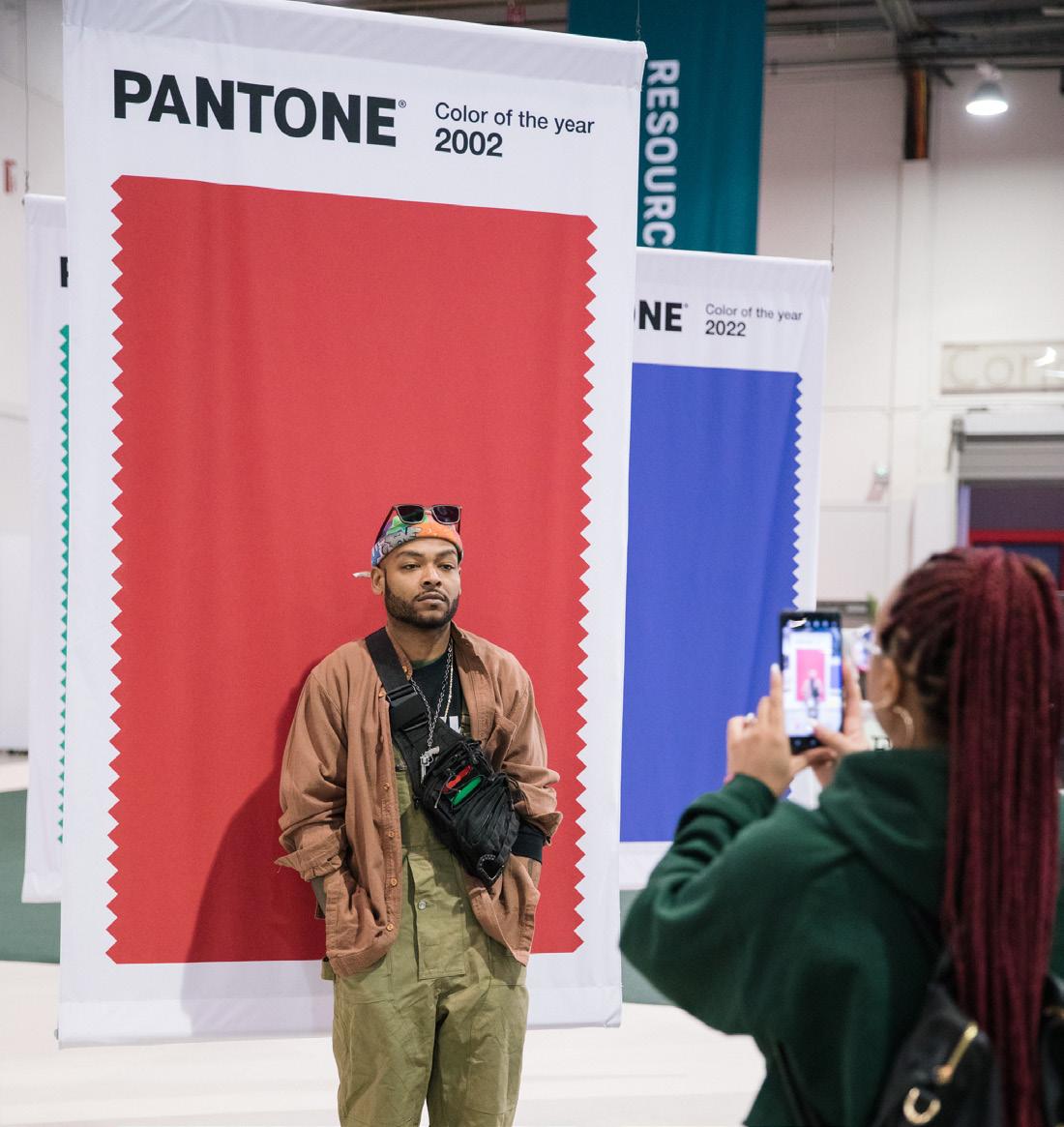

 Immerse Yourself in Color
Our attendees immersed themselves in a world of color within our Pantone color lounge.
Immerse Yourself in Color
Our attendees immersed themselves in a world of color within our Pantone color lounge.
David Tupaz, a celebrated artist and designer local to Las Vegas showcased his floral collections on the show floor showing what is on trend for Spring 2024.






SOURCING at MAGIC is known for its global community. This season we welcomed exhibitors from countries and regions including:

Bangladesh
Benin
Brazil
Cambodia
Canada
China
Colombia
Egypt
Ghana
Guatemala
Honduras
Hong
India
Kong
Indonesia
Japan
Jordan
Kenya
Lesotho
Madagascar
Mexico
Morocco
Myanmar
Nepal
Pakistan
Peru
Poland
Portugal
Singapore
South Korea
Spain
Taiwan
Togo
Turkey
UK
Vietnam
From monochromatic looks and slight pops of color our SOURCING at MAGIC community was dressed to impress.
This February, SOURCING at MAGIC introduced a new category to the event: Manufacturer Owned Brands, a white label service for apparel, footwear, and accessories. As a response to the industry’s needs. Some of the reasons to consider sourcing from manufacturer owned brands include:

• Cost and time savings by purchasing directly from the manufacturer and skipping the design and production stage
• Lower minimums and actualized LDP (Land Duty Paid) costs
• Less risk involved
Manufacturer Owned Brand exhibitors showcased products with their brand identity, original design, and latest seasonal collection at wholesale prices. Exhibitors bring an international fashion flare to the show from various countries and regions.

With a low minimum (less than 300 units), speed to market, and a short lead time (60 days or less), Manufacturer Owned Brands can help fill the gap between established brands and factories, providing a full service from design to finished goods. Manufacturers can also provide on-demand manufacturing, private label, and ready stock. For more information, please contact your sales representative.

